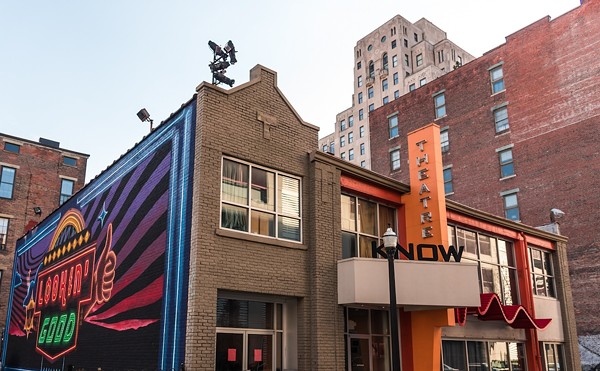The 25 Most Haunted Places in Ohio to Visit This Halloween Season
By CityBeat Staff on Tue, Oct 19, 2021 at 10:52 am
Scroll down to view images
Page 1 of 2
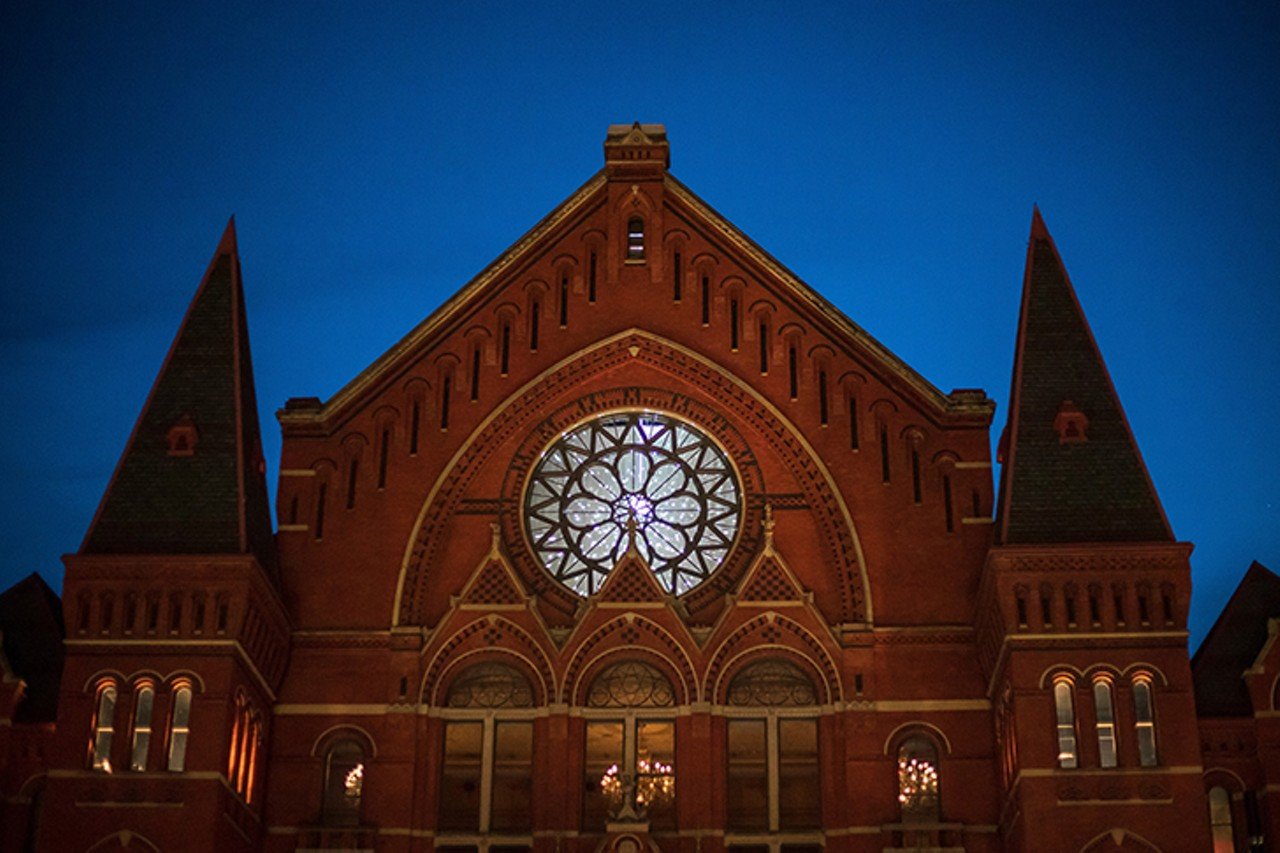
Music Hall
1241 Elm St., Over-the-RhineMusic Hall sits on several eerie plots of land and is reported to be one of the most haunted places in America. A portion of the building is situated on an 1800s Potter’s Field, or a cemetery used to unceremoniously bury the poor and unidentified or unclaimed bodies. And then, when a cholera outbreak in 1832 killed hundreds of Cincinnatians, many children became orphans after losing their parents to the horrifying disease. The Cincinnati Orphan Asylum was built next to where Music Hall is today and eventually became a “Pest House” because it entrapped several people with infectious diseases. But it wasn’t until 1876 when excavations began for the construction of Music Hall that workers first came across human bones in and around the foundation. The skeletons found during the excavation were laid to rest in a plot in Spring Grove Cemetery, but more remains were discovered in 1927 when workers were digging a trench. And again in 1988 when, according to the Friends of Music Hall, “workers drilling a new elevator shaft uncovered over two hundred pounds of bones.” And even more recently when Music Hall was revitalized in 2016-17, when workers found human remains under the orchestra pit. Employees ranging from the late former Pops Director Erich Kunzel to the Cincinnati Opera CEO and a night watchman have reported seeing and hearing spirits late at night, including the sound of unearthly music, children in period dress and more. Perhaps some of them are part of the many who died decades prior.
Photo: Emerson Swoger
1 of 25
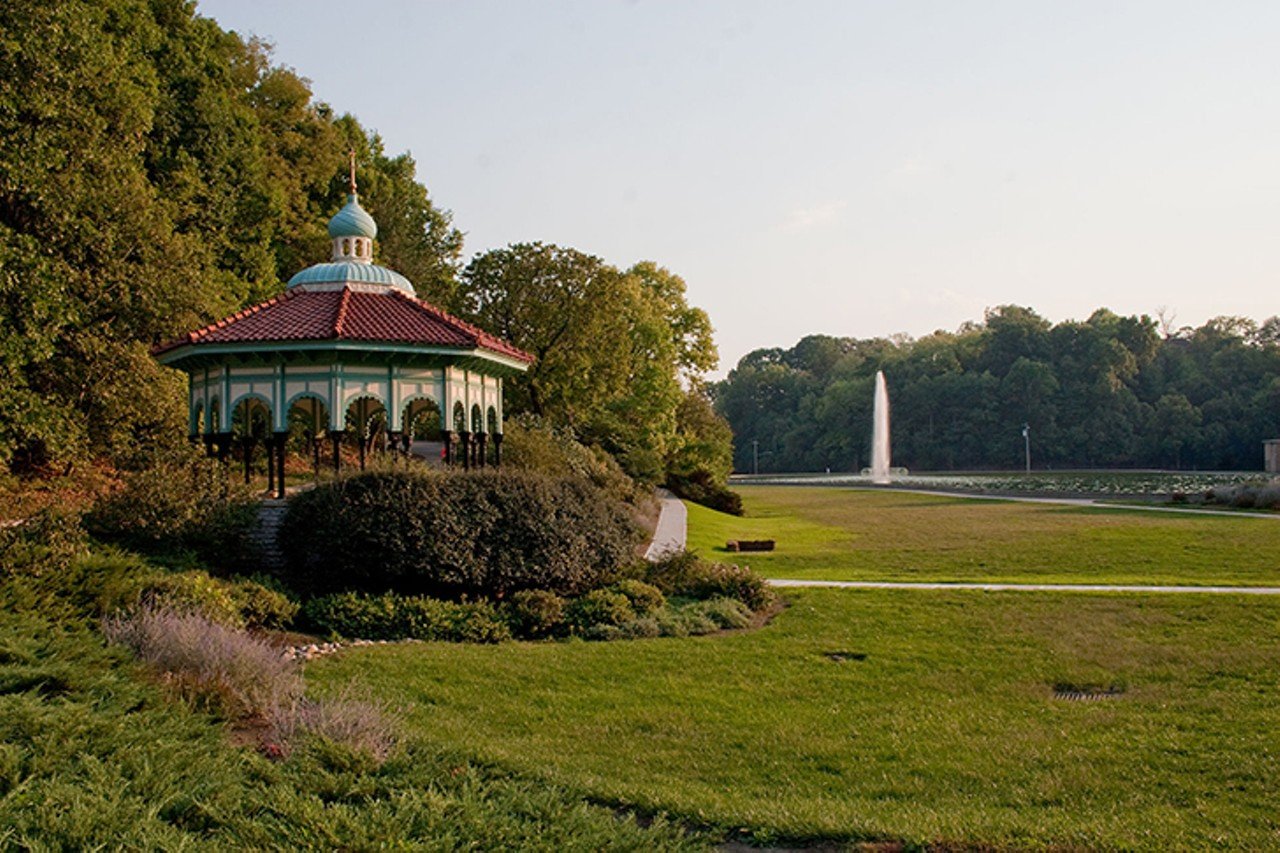
Spring House Gazebo
950 Eden Park Drive, Eden ParkTucked away in the hills Mount Adams sits Eden Park, an urban escape that’s home to the Cincinnati Art Museum, Krohn Conservatory...and the Spring House Gazebo. On Oct. 6, 1927, George “King of the Bootleggers” Remus and his wife, Imogene Remus, were set to meet in court to finalize their divorce. (Imogene was having an affair with a Prohibition agent and the two stole most of George’s money while he did a short stint in jail.) George waited outside of Imogene’s hotel before she left for court and, after she got into a taxi, the two engaged in a heated car chase, ending near the Spring House Gazebo, where George shot Imogene in the stomach as she attempted to flee. Dressed in all black to bemoan her marriage, she died at the hospital from her wound. Those who visit the gazebo today say the have seen a woman wearing all black, presumably Imogene, wandering nearby and felt her presence lurking.
Photo: Wikimedia.com/Greg Hume
2 of 25
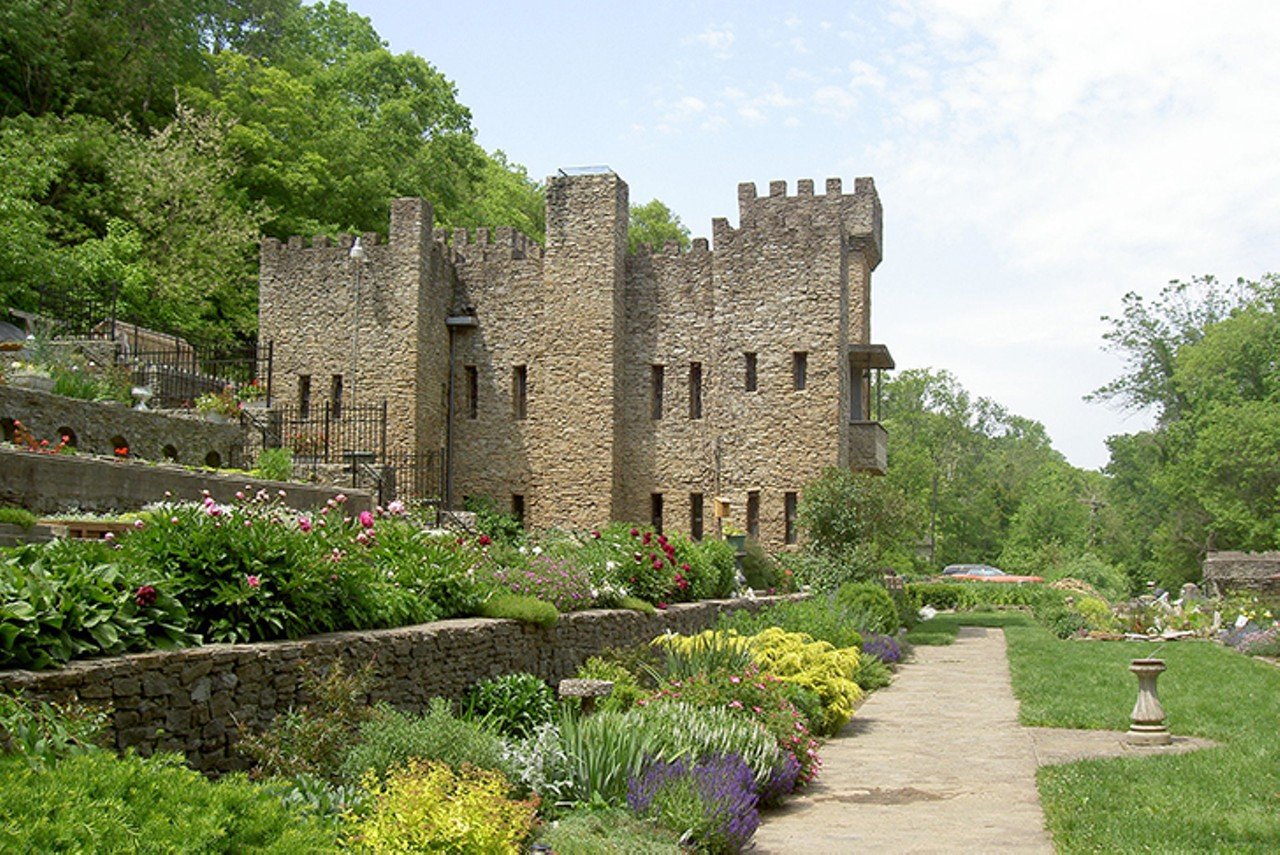
Loveland Castle
12025 Shore Drive, LovelandWorld War I army medic and Boy Scout troop leader Harry Delos Andrews built the Historic Loveland Castle & Museum, also known as Château Laroche, over the course of 50 years with handmade bricks (formed with quart-sized paper milk cartons) and stones from the nearby Little Miami River. Modeled after European castles, it features towers, a dry moat, hand-tiled ceilings, murder holes and a collection of period weaponry. Andrews lived in the castle until his death in 1981 at the age of 91, when he succumbed to gangrene after sustaining severe leg burns in a trash fire accident on the roof of the castle. After his death, the castle was left to the Knights of the Golden Trail, a local Boy Scout troop. People can visit Loveland Castle today for picnics, tours and more — although Harry is rumored to never have left. Harry’s apparition can be seen wandering around when something is wrong with the castle. According to legend, one day, the Boy Scouts heard doors frantically slamming and they went upstairs to investigate but no one was there. They later found out that the septic tank was damaged and about to cause irreversible damage to the castle. Was this Harry still watching over his life’s work?
Photo: Wikimedia.com/ConlonTT
3 of 25
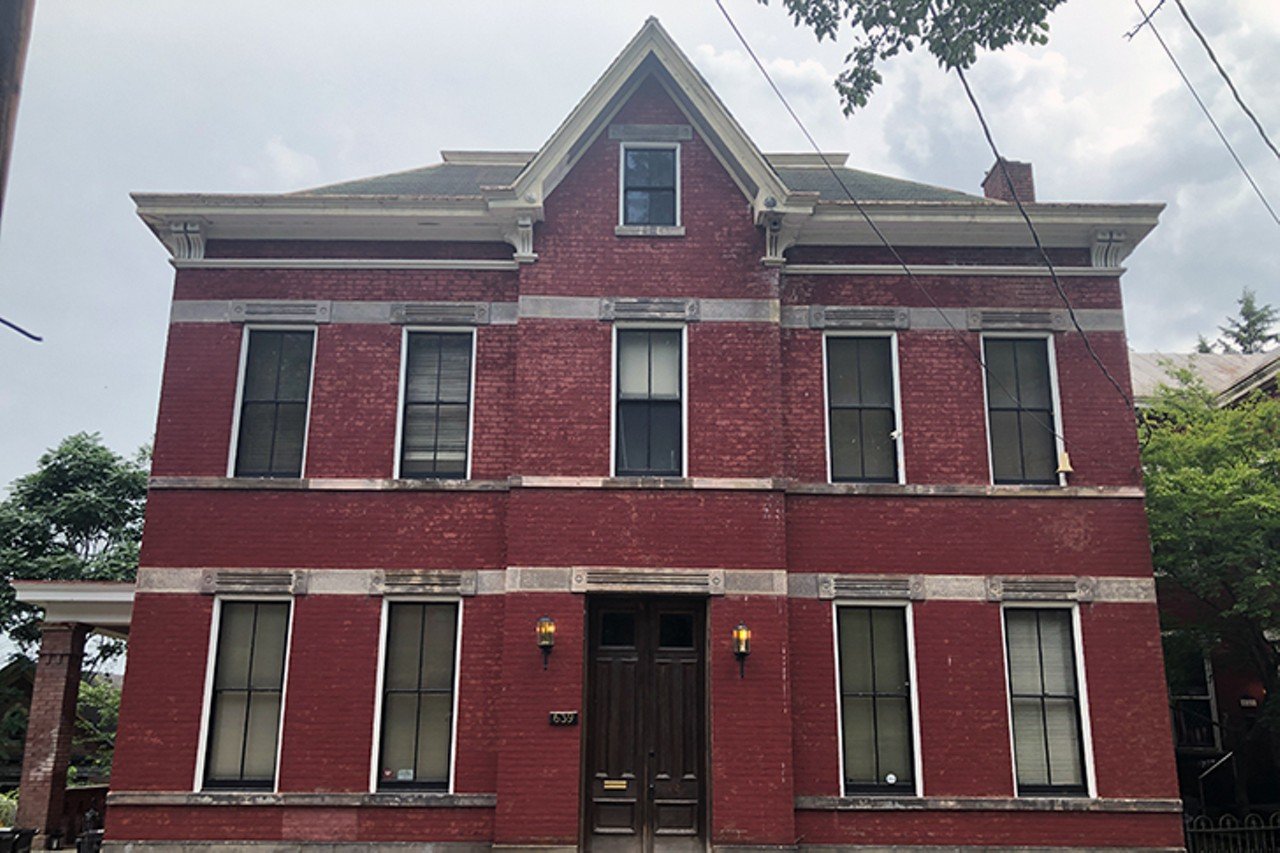
Sedamsville Rectory
639 Steiner Ave., SedamsvilleGet out your EMFs and your holy water. The rectory, which is the one of four buildings that once belonged to the Our Lady of Perpetual Help Church, is said to be haunted by an evil spirit. The building historically housed priests, including Father Donald MacLeod, who was hit by a train in the 1800s and whose ghost has been seen wandering near the building. According to the Travel Channel show Ghost Adventures, which went to Sedamsville to perform an exorcism on the property, “This once-holy place of peace and rest, however, has been plagued by a violent, demonic spirit. The current owners of the rectory have experienced ice-cold breezes on boiling-hot days, overwhelming (and spontaneous) feelings of melancholy and have been scratched and shoved by unseen forces.” People have also reported hearing unexplained voices, seeing doors opening and closing on their own, as well as witnessing the spirit of a child with a noose around its neck.
Photo: Erin Gardner
4 of 25

The Ohio State Reformatory
100 Reformatory Road, MansfieldOriginally a prison, the Ohio State Reformatory opened in 1890. By the 1960s, the prison became overcrowded, brewing nasty diseases and major conflict among prisoners. Some were forced to share calls — even death row inmates. Overpopulation caused a number of inmate deaths. Most died of diseases, some hung themselves and others became severely mentally ill. The prison was forced to close in 1972. The paranormal history of this building is a violent one. Visitors have reported being hit or shoved, hearing cell doors slam and most just feel incredibly uneasy when visiting. Paranormal programs offered by the reformatory rage from public ghost hunts and ghost hunt classes to private investigations.
Photo: Wikimedia.com/AmyTheOvenMitt
5 of 25
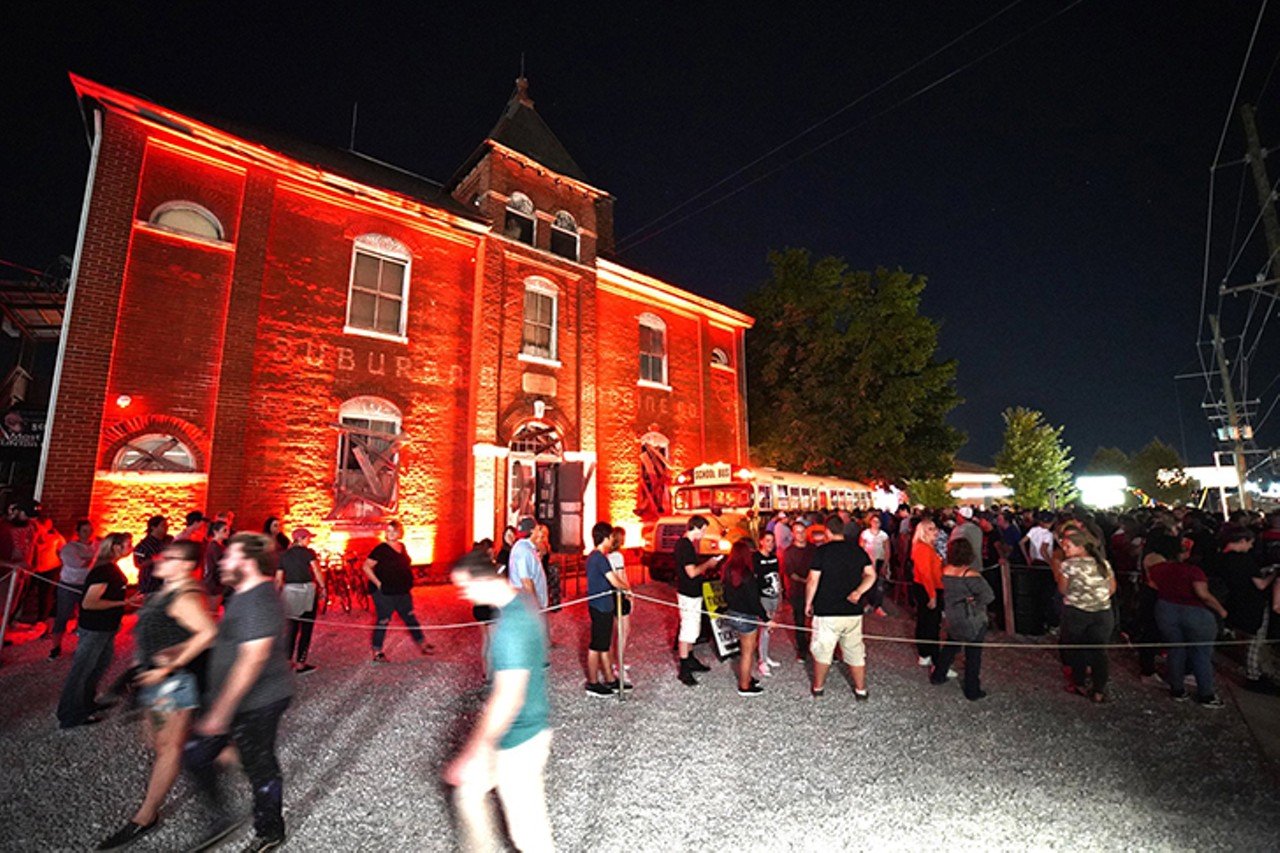
Dent Schoolhouse
5963 Harrison Ave., DentLegend says that a group of students mysteriously vanished from the Dent Schoolhouse in 1942, followed by several more disappearances in the years to follow. It wasn’t until 1955 that a foul odor led angry community members to the schools’ janitorial basement, where the students’ bodies were discovered in barrels wedged between the walls. The murders were attributed to the school’s janitor, but the man — Charlie — was never found. That is, until now — Charlie is said to roam the halls of the school today, cleaning alongside the 50 to 65 actors who bring Dent to life every Halloween. In addition to the costumed actors, the actual spirits of his victims are also said to roam the halls and Dent offers ghost tours for those who want to experience the paranormal. Tours (sans actors and manufactured frights) are led by a guide who explains the history of the school and different spectral activities that have occurred in different areas the building.
Photo: Facebook.com/TheDent Schoolhouse
6 of 25

The Ridges
24 W. State St., AthensNow called The Ridges, this Ohio University building was originally the Athens Lunatic Asylum and once partially functioned as a tuberculosis ward. For years, it provided care for Civil War veterans, the homeless, the elderly and children where they practiced now questionable treatments like lobotomies and prescribed psychotropic drugs. The causes for many patient’s admission were also questionable — masturbation, menstrual derangements and even minor alcohol addictions. Patients who died, unclaimed by family, were buried in one of the three cemeteries on the property where headstones were originally labeled by number instead of name. One of the most popular ghost stories involves Margaret Schilling, a patient who went missing for 42 days, and was found dead, naked with her clothes neatly folded next to her, in a locked and abandoned section of the hospital. It is said that her decomposing body left an imprint on the floor which still cannot be removed. Her spirit is said to wander the building along with other disembodied voices, echoing screams and apparitions peering through windows. It is said to be those who were mistreated or died at the hands of the asylum staff.
Photo: Wikimedia.com/Asoep44
7 of 25

Buxton Inn
307 E. Broadway, GranvilleEstablished in 1812, the Buxton Inn is a hotel, tavern and restaurant that takes you back in time. It was incredibly popular in its day, even visited by a few presidents. Today, the ghosts of past owners are said to haunt the building and surrounding land. Major Buxton, one of the owners who the inn was named after, is said to haunt it as well. Guests have reported slamming doors and hearing their names called out. Rooms seven and nine are apparently the most haunted.
Photo: Wikimedia.com/JudMcCranie
8 of 25
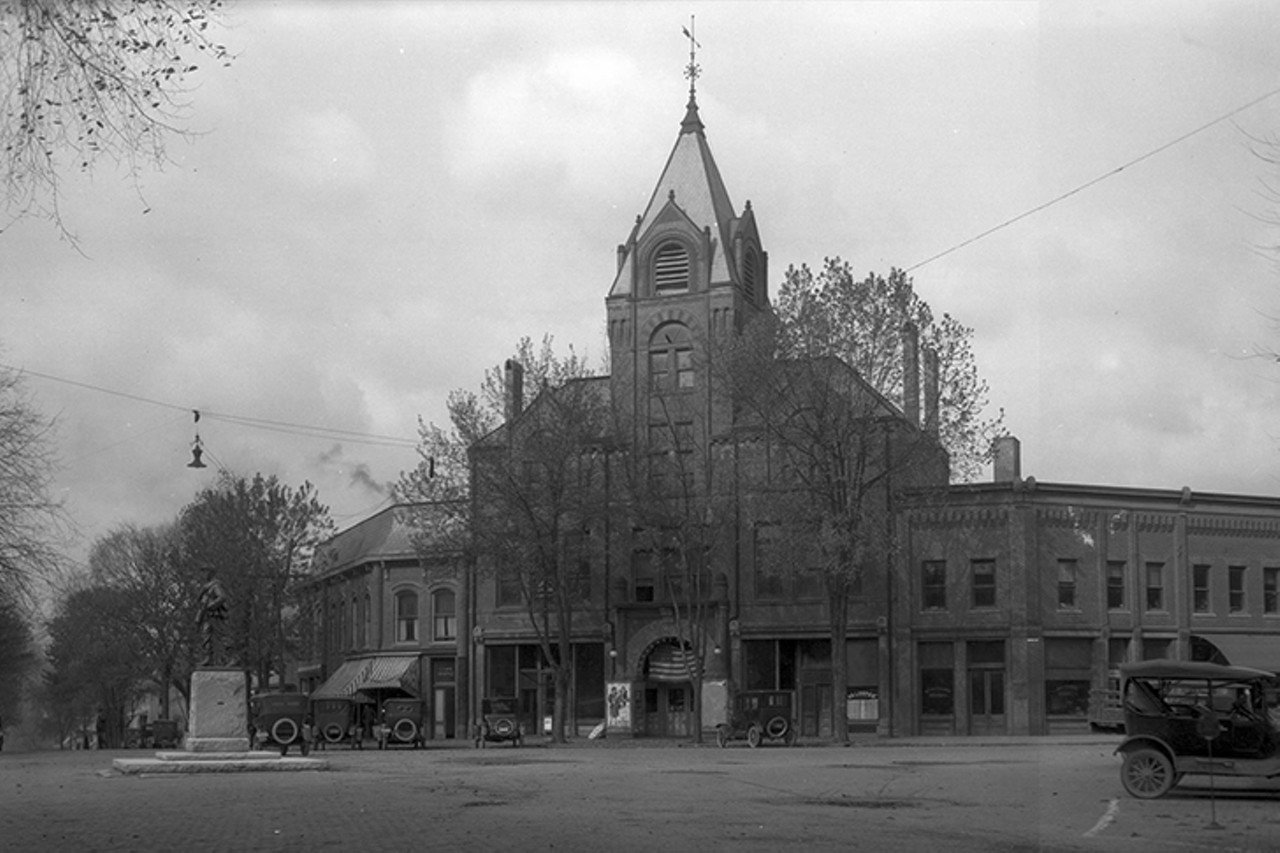
The Twin City Opera House
15 W Main St., McConnelsvilleThis opera house now serves as a theater, houses government offices and a hub for cultural events in the area. It opened to the public in 1892, housed a variety of performances during the Great Depression and has survived the many technological advances of the past decades. According to a story in the Athens The Post, Eric Glosser, a ghost hunter who has worked for the opera house for several years, claims there are 10 to 14 ghosts there. He has had many encounters with Charlie, a supposed demon who lurks in the unused underground tunnels beneath the building. “When he is present, there is a strong electrical charge. You’ll get the hair raised on your arm and you’ll get nauseous,” Glosser tells The Post. Another ghost — Robert, who Glosser claims is friendly — says that Charlie has portals to hell in these tunnels. Out of all the places Glosser has traveled to investigate the paranormal, he claims the Twin Opera House is the most haunted.
Photo: twincityoperahouse.com
9 of 25
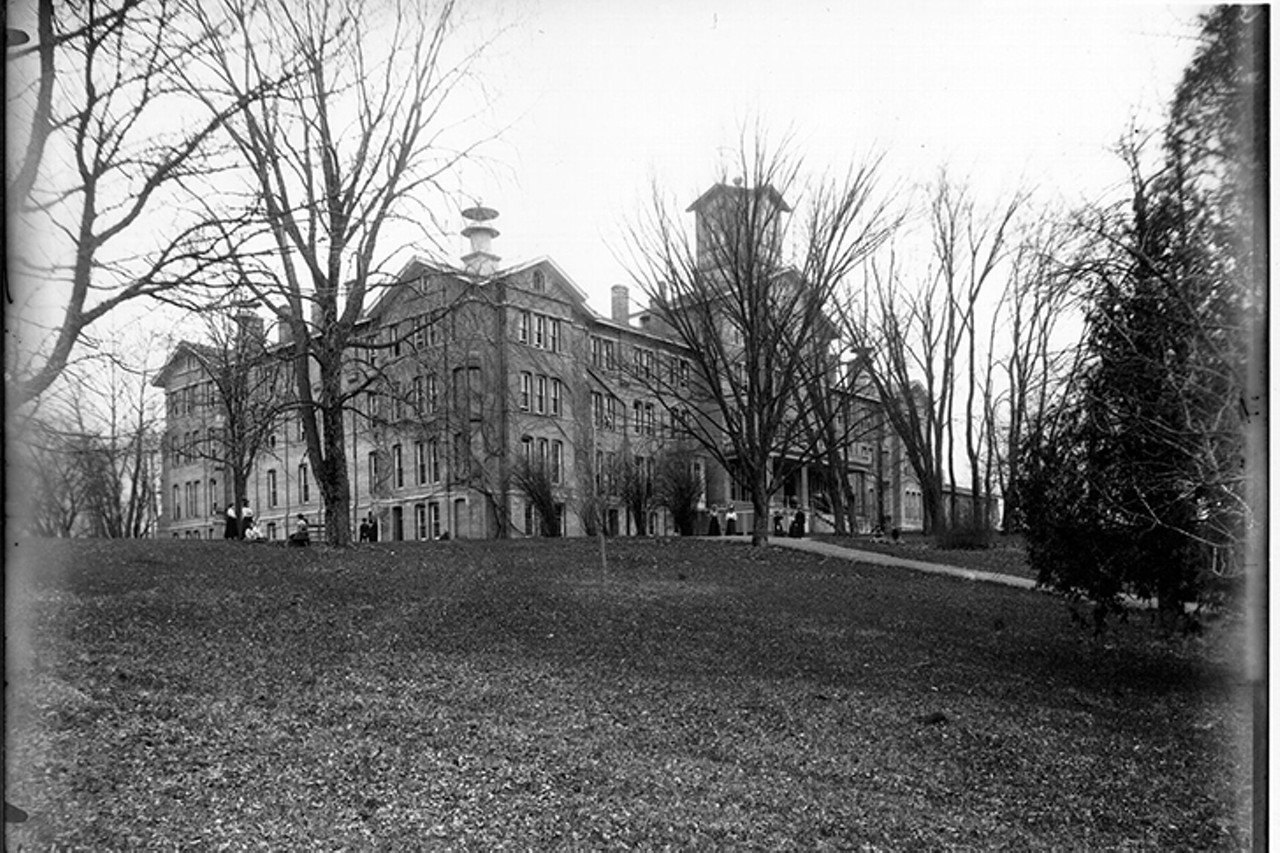
Miami University’s Peabody and Reid Hall
686-724 Western College Drive, OxfordThe ghost of Peabody Hall on Miami University’s campus is said to be that of the president, Helen Peabody. She deeply opposed co-education and would constantly watch over the girls when the boys were around. Apparently, her ghost still taunts the males in the dorm while keeping a close eye on the females. Another eerie story involves the death of Roger Sayles, an RA in Reid Hall in 1959. He was shot and killed during an attempt to stop a fight. The shooter ran to another hall and ended his own life. When Sayles was shot, he left bloody handprints on the wall that supposedly, despite numerous attempts to scrub the, off, never went away. This building was eventually torn down but remains a bizarre story among the students on Miami’s historic campus.
Photo: Wikimedia.com/Snyder, Frank R. Flickr: Miami U. Libraries
10 of 25
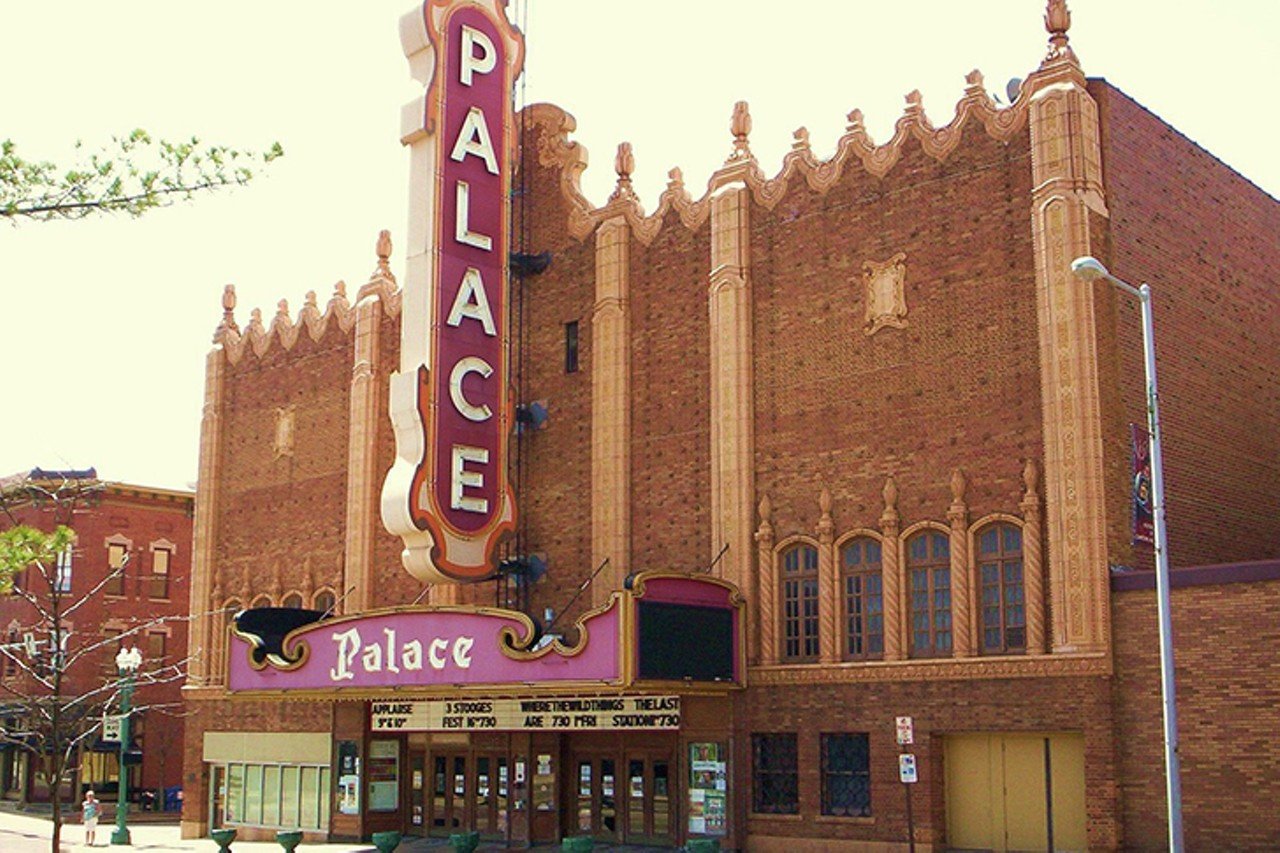
Palace Theatre
34 W Broad St., ColumbusBefore a show he was performing in the 1970s, magician Harry Blackstone held a seance with a medium to contact a deceased fellow magician, Howard Thurston — the arch rival of his father, Blackstone Sr., according to The Lantern. But they accidentally reached another spirit instead: the ghost of a man who was murdered in the theater and now haunts the building. But the lore of Thurston lives on: The magician made a pact with family and friends to ensure they would try to contact him once he died. The ultimate test of attempting to contact Thurston has failed each time someone tries but these many attempts convince people that there are other spirits wandering the building as well. In fact, the theater has updated its security system due to the many visitors who think they will be the ones to contact Thurston.
Photo: Wikimedia.com/OHWiki
11 of 25
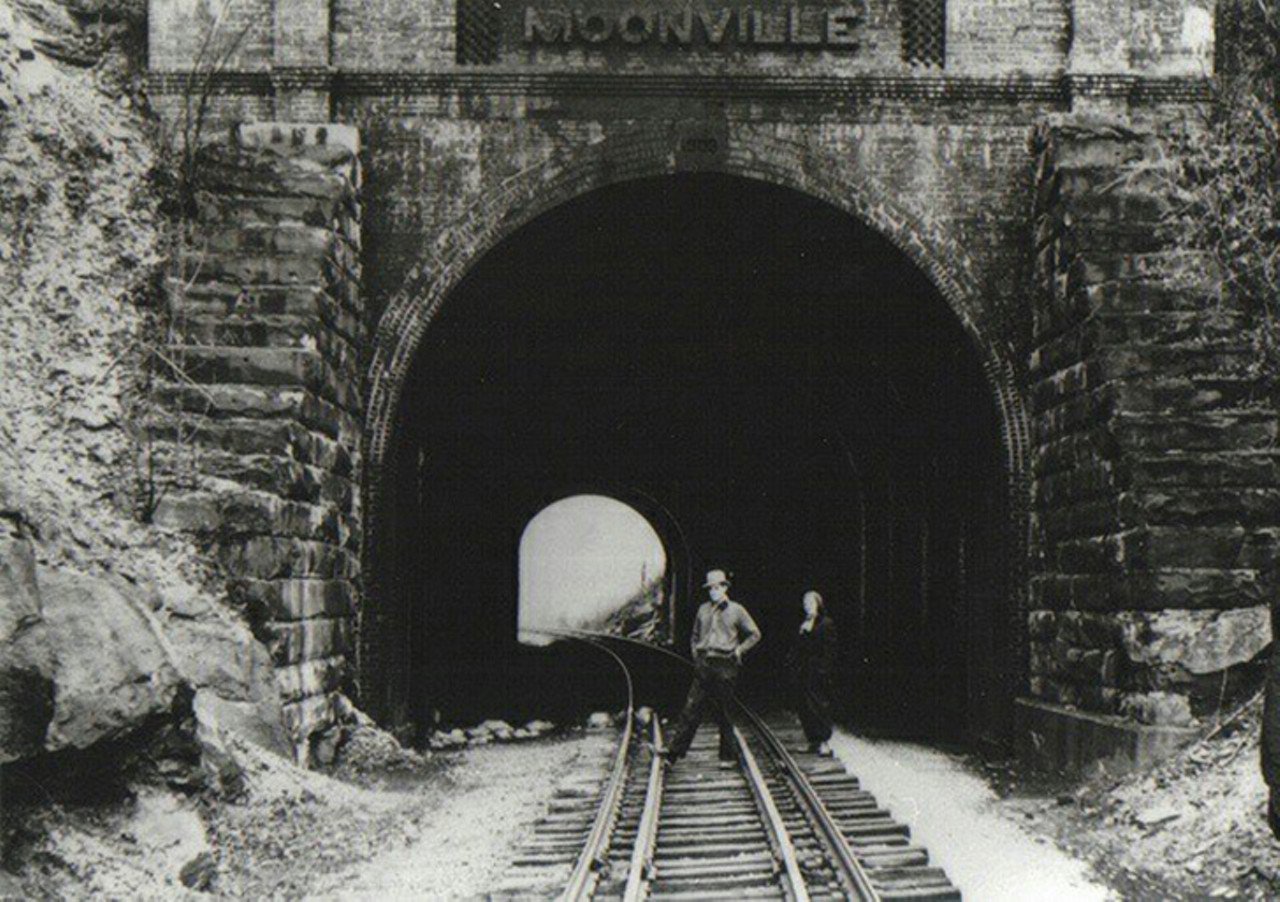
Moonville Tunnel
Hope-Moonville Road, AthensMoonville, an old coal mining town situated along a set of railroad tracks, now contains only a few abandoned homes and several ghost stories. The most infamous Moonville ghost story originated in 1880 when engineer Theodore Lawhead was driving a train down the dark and desolate tracks from Cincinnati to Marietta when another train unexpectedly collided with his. This was apparently a train dispatcher’s mistake and Lawhead and a fireman were killed instantly. As early as 1895, ghost stories about a figure — thought to be Lawhead — holding a bright white lantern with “a flowing white beard," eyes that "glistened like balls of fire" and a "halo of twinkling stars” (according to a report in the Chillicothe Gazette) would appear and just as quickly disappear. In addition to the spectral engineer, Moonville is supposedly haunted by a railway brakeman who looms in the tunnel, a woman who smells like lavender and a bully named Baldie Keeton, who has been known to throw rocks and tease people.
Photo: Facebook.com/MoonvilleTunnel
12 of 25
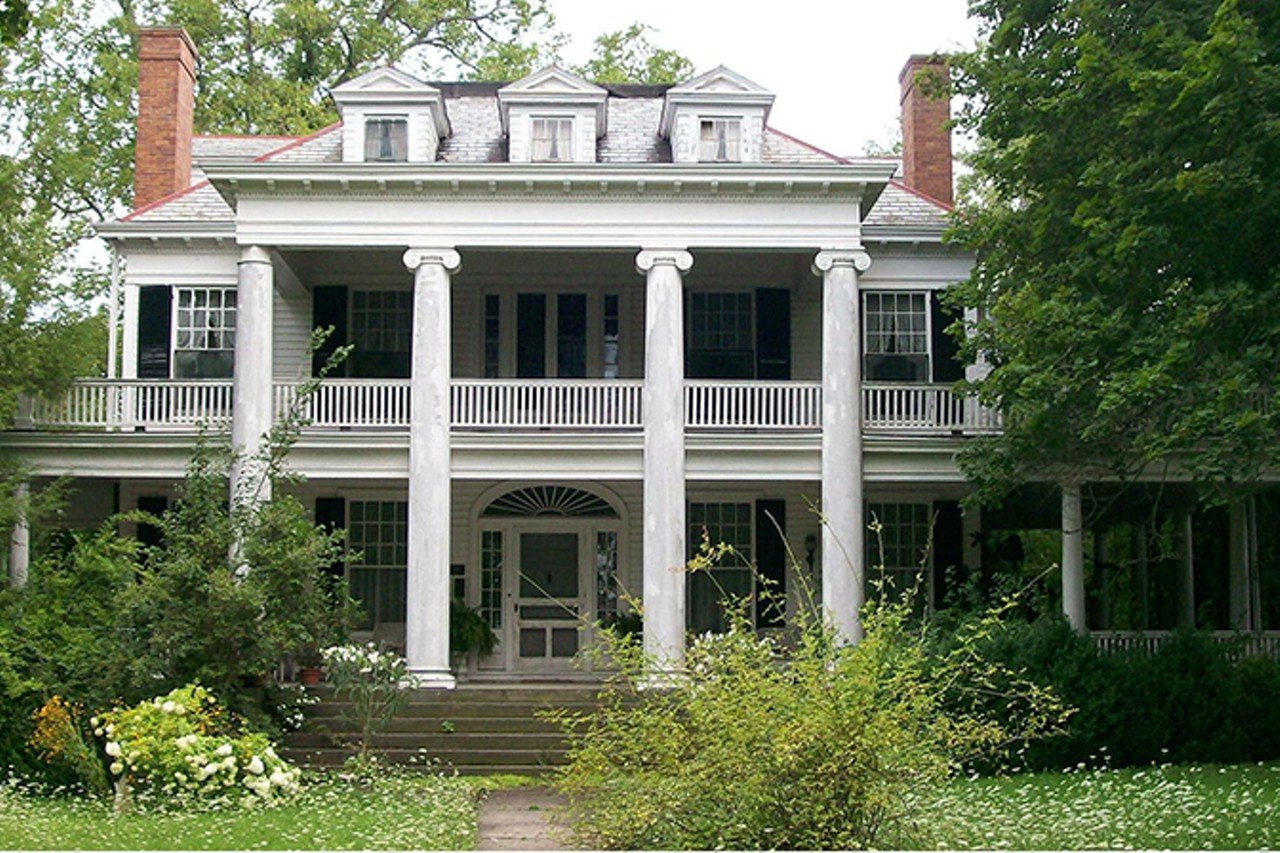
Mooney’s Mansion
Walhalla Road, ClintonvilleThere’s plenty of speculation when it comes to the sinister legend behind Mooney’s Mansion. Allegedly, a jealous and enraged Dr. Mooney murdered his wife and children with an axe and then hung himself on Calumet Bridge. People say if you go under the bridge at night, you can see his ghostly swinging silhouette.
Photo: Wikimedia.com/Bwsmith84
13 of 25
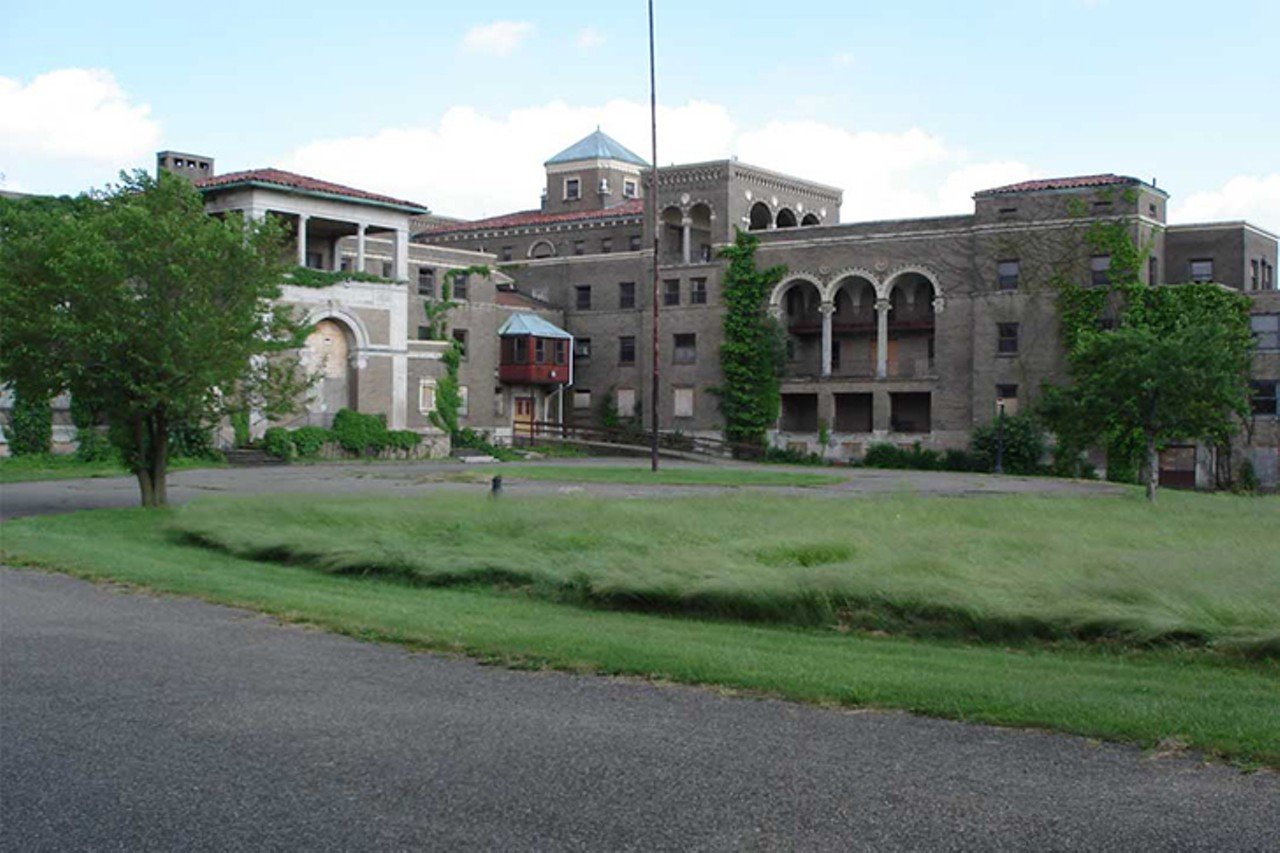
Molly Stark Park
7900 Columbus Road, Louisville, OhioNow closed for over 20 years, Molly Stark Hospital originally housed those suffering from tuberculosis until the 1970s. Because of the seriousness of the disease, many died while in the hospital’s care. Those with tuberculosis were isolated from the rest because it is extremely contagious — it was essentially its own city with a power plant, nurses quarters and underground tunnels to transport the patients from building to building. The allure of the building has resulted in many arrests of trespassers since the building is fenced off and deemed unsafe by local police. Not many are in or near the building enough to experience the potentially paranormal activity from the old hospital, but the few that have investigated claim that it definitely is.
Photo: StarkParks.com
14 of 25

Beaver Creek State Park
12021 Echo Dell Road, East LiverpoolThis park is special because of its history of being a canal system in the 1800s, with locks that still remain in the park. One of them, called “Jake’s Lock,” is said to be haunted by Jake, a canal worker who was struck by lightning while walking across the top. Many other legends exist within the park including the tale of Esther Hale, known as the “Bride of the Bridge.” On the morning of her wedding, someone was sent to check on the groom to find that his house was empty and he was never seen again. Esther, grieving for months wondering what happened to her soon-to-be husband, was found dead in her home. According to the book Haunted Ohio II, "It is said by the locals that you can still see her, dressed in white, looking for her bridegroom on the bridge over Beaver Creek in Columbiana County. She waits there every year on August 12, a hideous figure in tattered white satin and lace. And if she touches you she will become young and beautiful again — but you will die."
Photo: Wikimedia.com/Nyttend
15 of 25

Franklin Castle
4308 Franklin Blvd., ClevelandThe Franklin Castle is arguably the most haunted house in Ohio due to the Tiedemann family’s tragic past. Hannes Tiedemann, a German immigrant and co-founder of Union Banking & Savings Co., built the home in 1881. He and his wife, Louise, dealt with the loss of four children, among other deaths. Because of the many deaths surrounding Hannes, people became skeptical that he was involved. One of his daughter’s deaths occurred shortly after his mother’s death in 1891. His brute reputation didn’t help either. Once his wife died, he quickly remarried, prompting him to sell the house. Tiedemann died of a stroke shortly after. Bones were found tucked in a corner in the 1970s, said to be from a doctor who lived (and practiced) there previously. A little girl apparently haunts the third floor and cries are heard in every hallway. Privately owned and not open to the public, it is still a popular attraction and spooky photo-op in Cleveland.
Photo: Wikimedia.com/Cricchetti
16 of 25
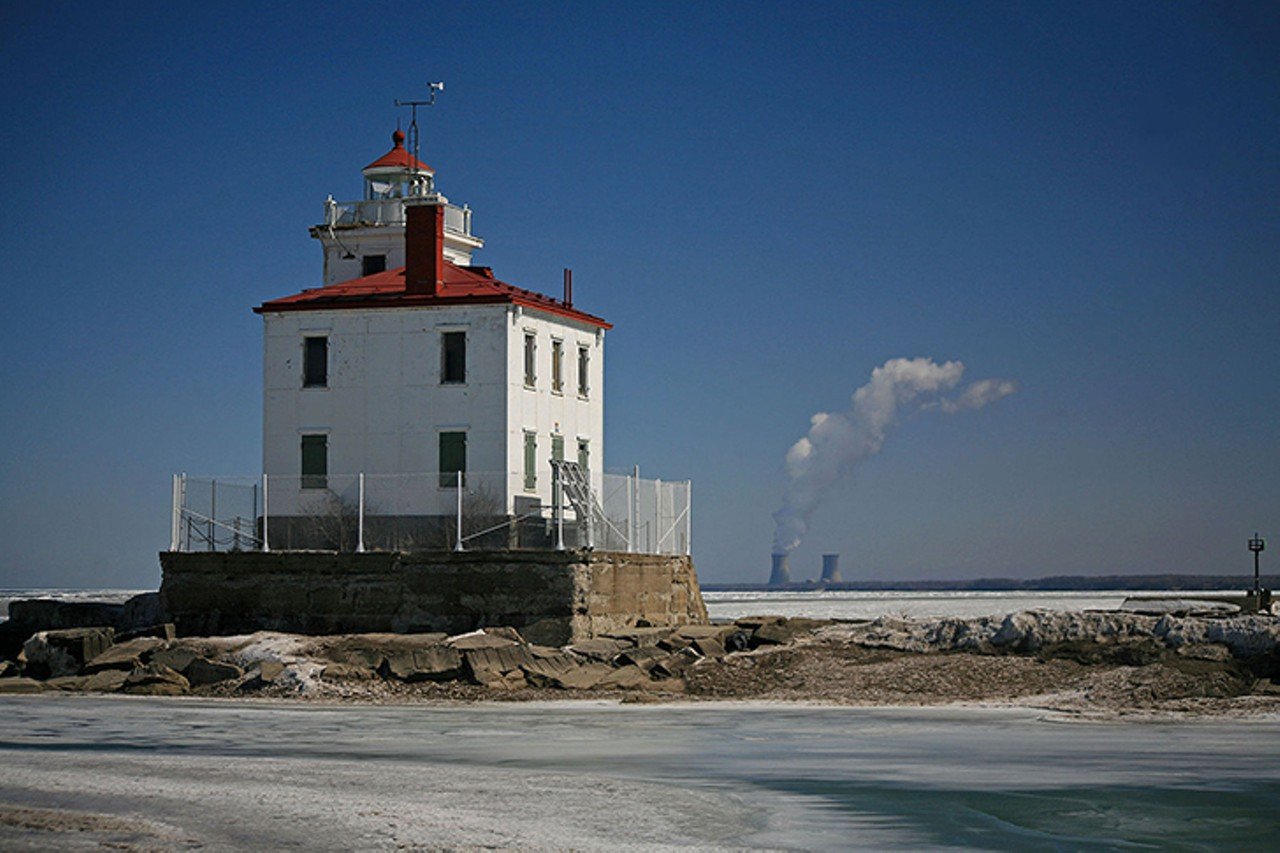
Fairpoint Harbor Lighthouse
129 Second St., Fairpoint HarborInstead of hysterical spirits or even friendly ghosts, this tale involves a ghost cat. In the 1870s, Captain Joseph Babcock was the keeper of the Fairpoint Harbor Lighthouse. Him and his family lived on the second floor of what is now a museum. His wife, bedridden, had several cats to keep her company, including a beloved gray act. After she died, most of the cats disappeared. A curator living at the lighthouse years later reported seeing the ghost of a gray cat. She claimed it would run around the kitchen as if it were playing and jumped on her bed one night and she felt the weight pressing on the bed. In 2001, workers who were installing AC units found the mummified remains of a dead cat in the crawl space.
Photo: Wikimedia.com/Laszlo Ilyes
17 of 25
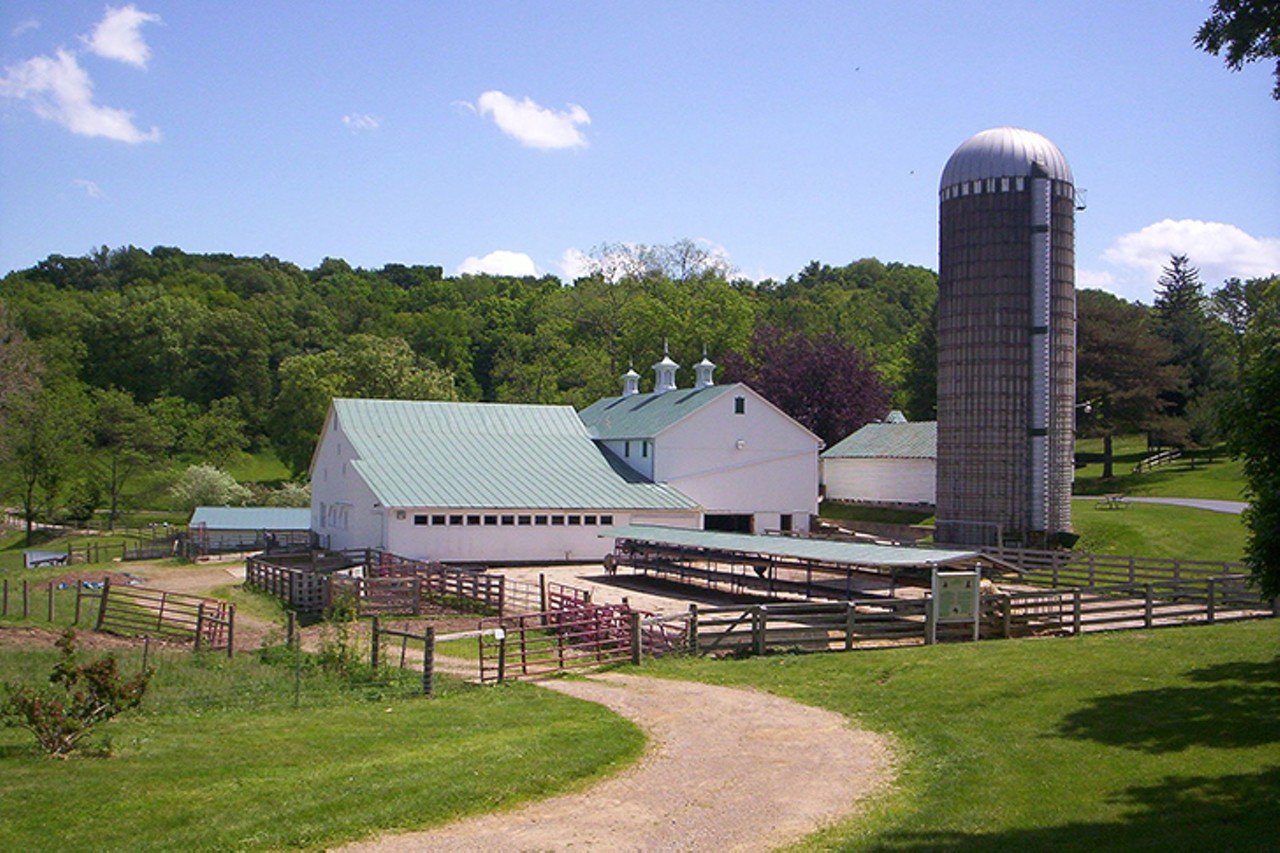
Malabar Farm
4050 Bromfield Road, LucasIn a farmhouse on the land of Malabar Farm, 23-year-old Ceely Rose lived with her family. Ceely was was said to be “half-child and half-woman” according to an 1896 newspaper article. She was infatuated with a boy named Guy Berry who lived in a neighboring farmhouse. They saw each other every day, but her parents told her to stay away from him. Then at breakfast in June 1896, Ceely poisoned her family’s cottage cheese with arsenic and watched them die. She was found not guilty by reason of insanity. Ceely’s house still stands and is owned by Malabar Farms State Park. A play depicting this horrific event is performed at the Malabar Farm barn. During the scene where Ceely watched her mother die, the lights flickered and once her mother died, the light returned to normal. Ceely has reportedly been seen wandering the grounds. Maybe she still has an attachment to her childhood home.
Photo: Wikimedia.com/OHWiki
18 of 25
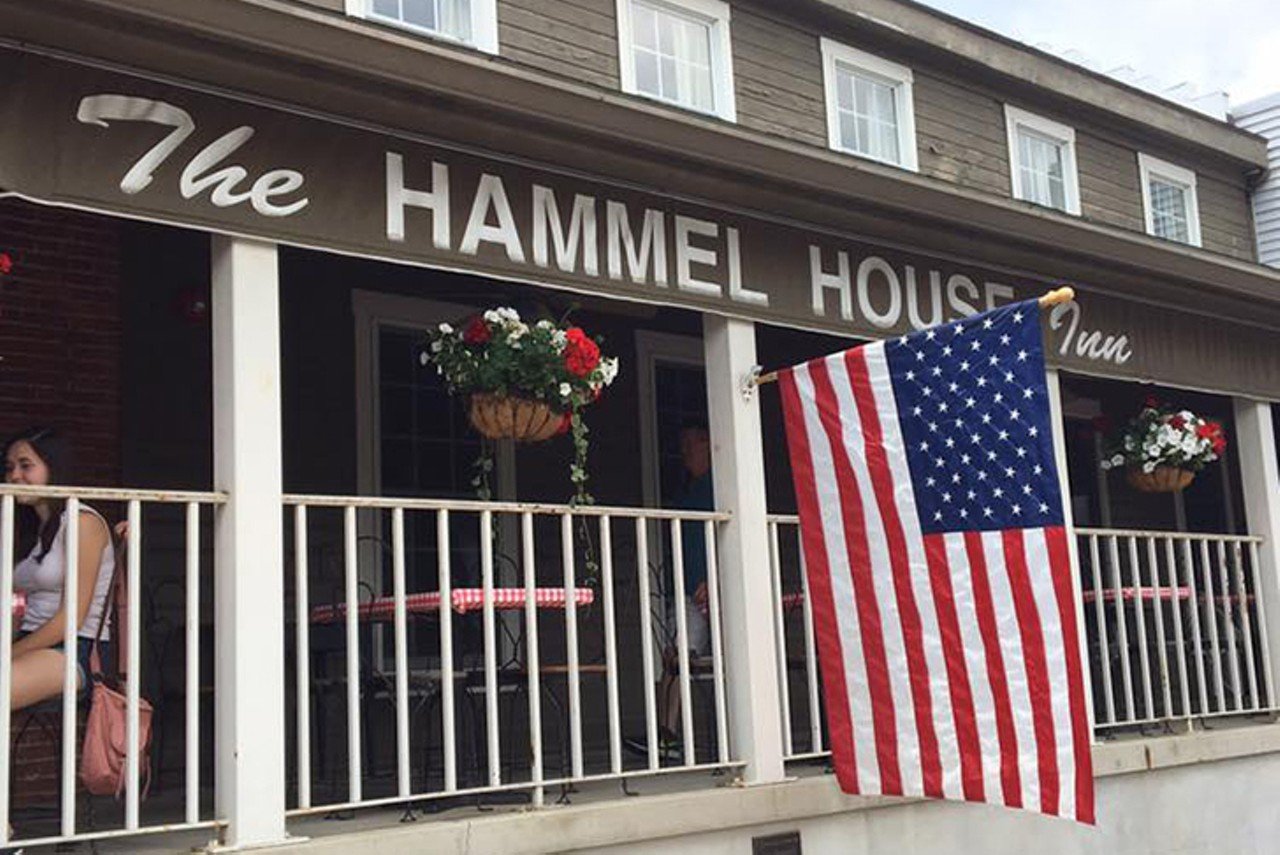
Hammel House Inn
121 S. Main St., WaynesvilleThe Hammel House was originally an apartment complex. Reports of ghosts only became known once it was transformed, now operating as a B&B. The most prominent claim is that a black shadow lurks around the building. According to lore, a man in room three was rudely awoken by a loud party. He jumped out of his bed to investigate. He went downstairs to find not another soul at the Inn. The next morning he saw a shadow float through the walls between rooms two and three. Employees routinely report sightings of this misty black figure and a ghost cat. The only explanation for the black figure is that it he was a murderer, feeling so guilty about killing a man who was also staying at the Inn, that his spirit remains here.
Photo: Facebook.com/HammelHouseRestaurant&B&B
19 of 25
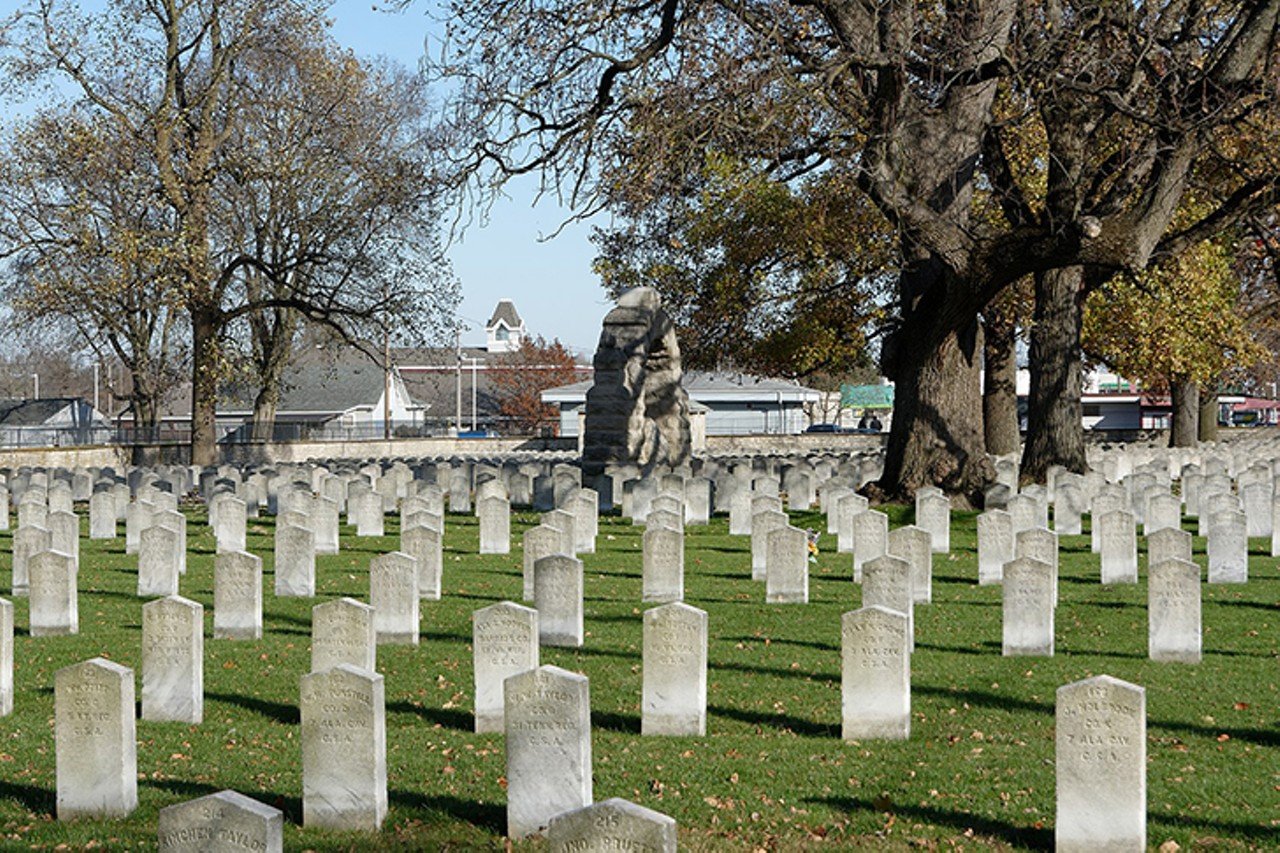
Camp Chase Confederate Cemetery
2900 Sullivant Ave., ColumbusUsed as a Confederate prison camp during the Civil War, close to 2,000 soldiers were laid to rest at Camp Chase Confederate Cemetery, many taken by diseases like smallpox. Obviously, this place is rumored to be haunted — but not by soldiers. The mysterious weeping “Lady in Gray” is said to wander and lay flowers on two specific graves. Those who’ve spotted her are overcome with tremendous sadness watching her seemingly grieve. She’s even been allegedly photographed by paranormal investigators.
Photo: Wikimedia.com/Judson McCranie
20 of 25
Page 1 of 2
- Local Cincinnati
- News & Opinion
- Arts & Culture
- Things to Do
- Food & Drink
- Music
- Cincinnati in Pictures
- About City Beat
- About Us
- Advertise
- Contact Us
- Work Here
- Big Lou Holdings, LLC
- Cincinnati CityBeat
- Detroit Metro Times
- Louisville LEO Weekly
- St. Louis Riverfront Times
- Sauce Magazine



